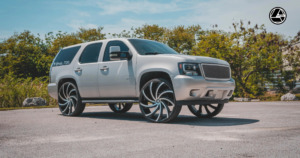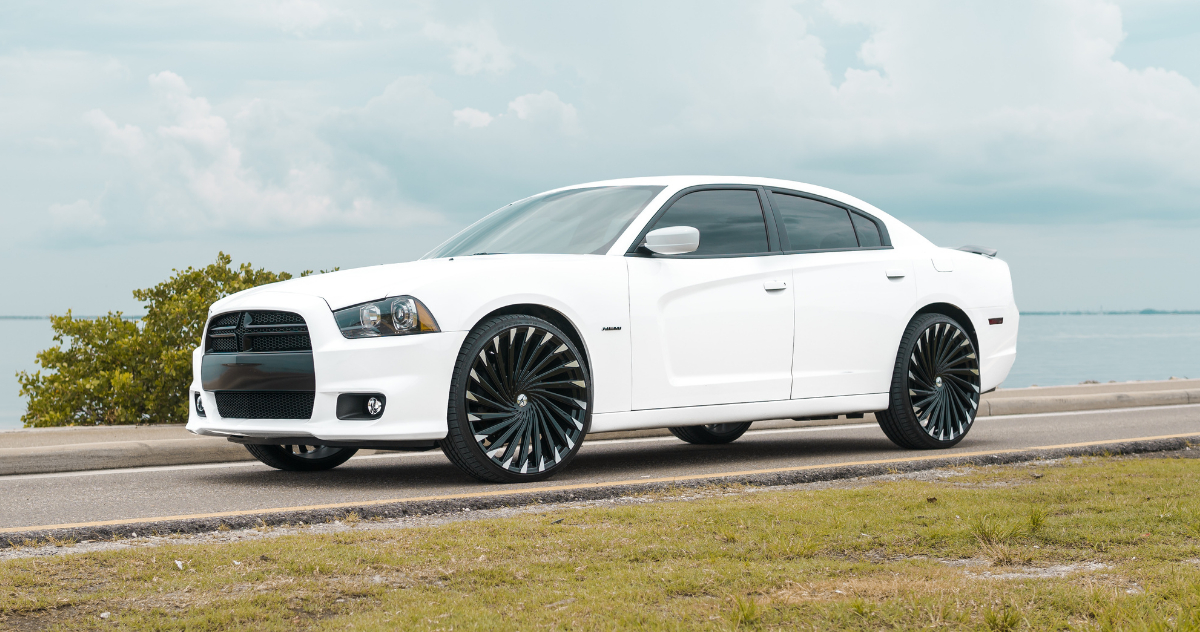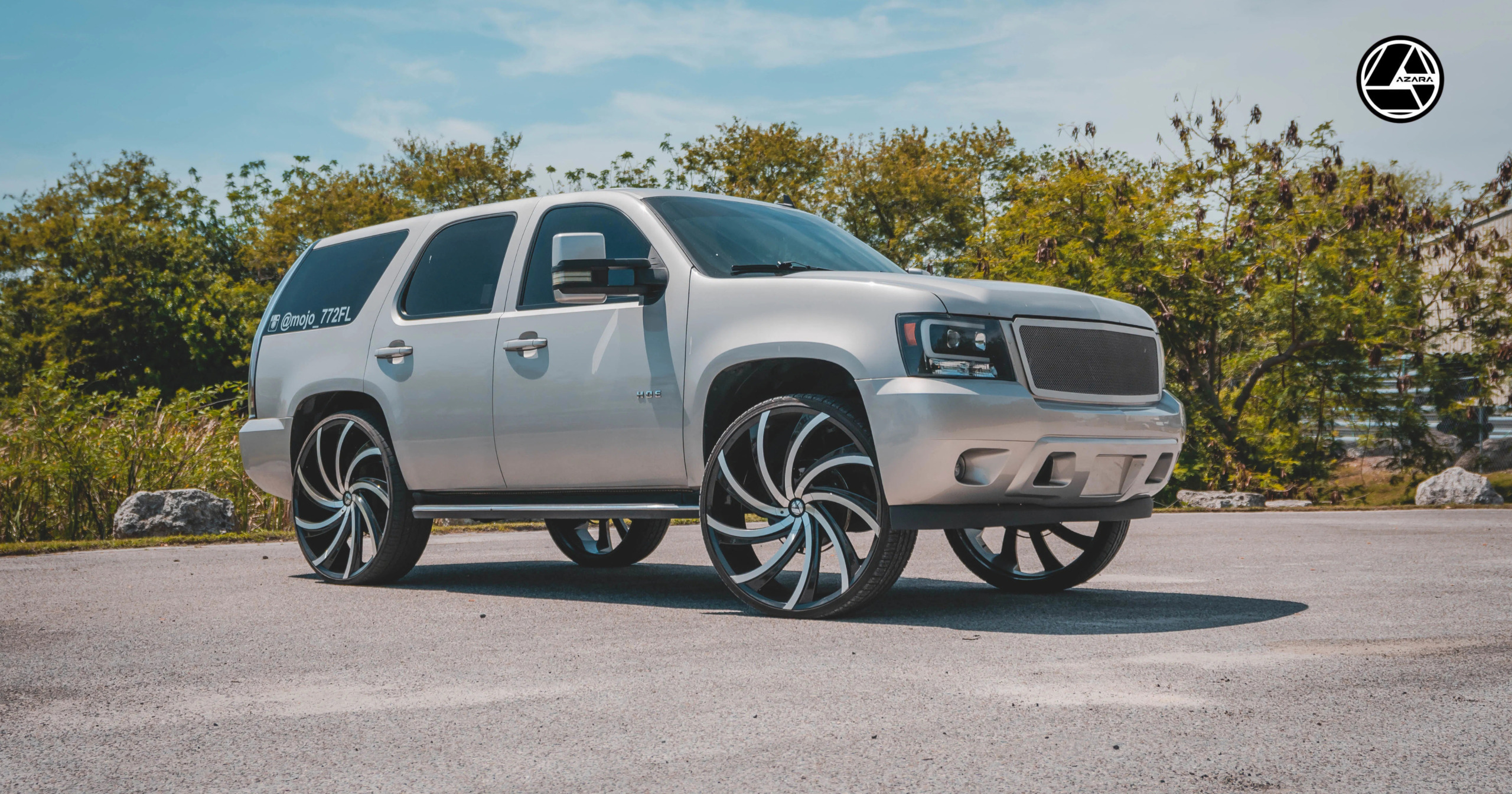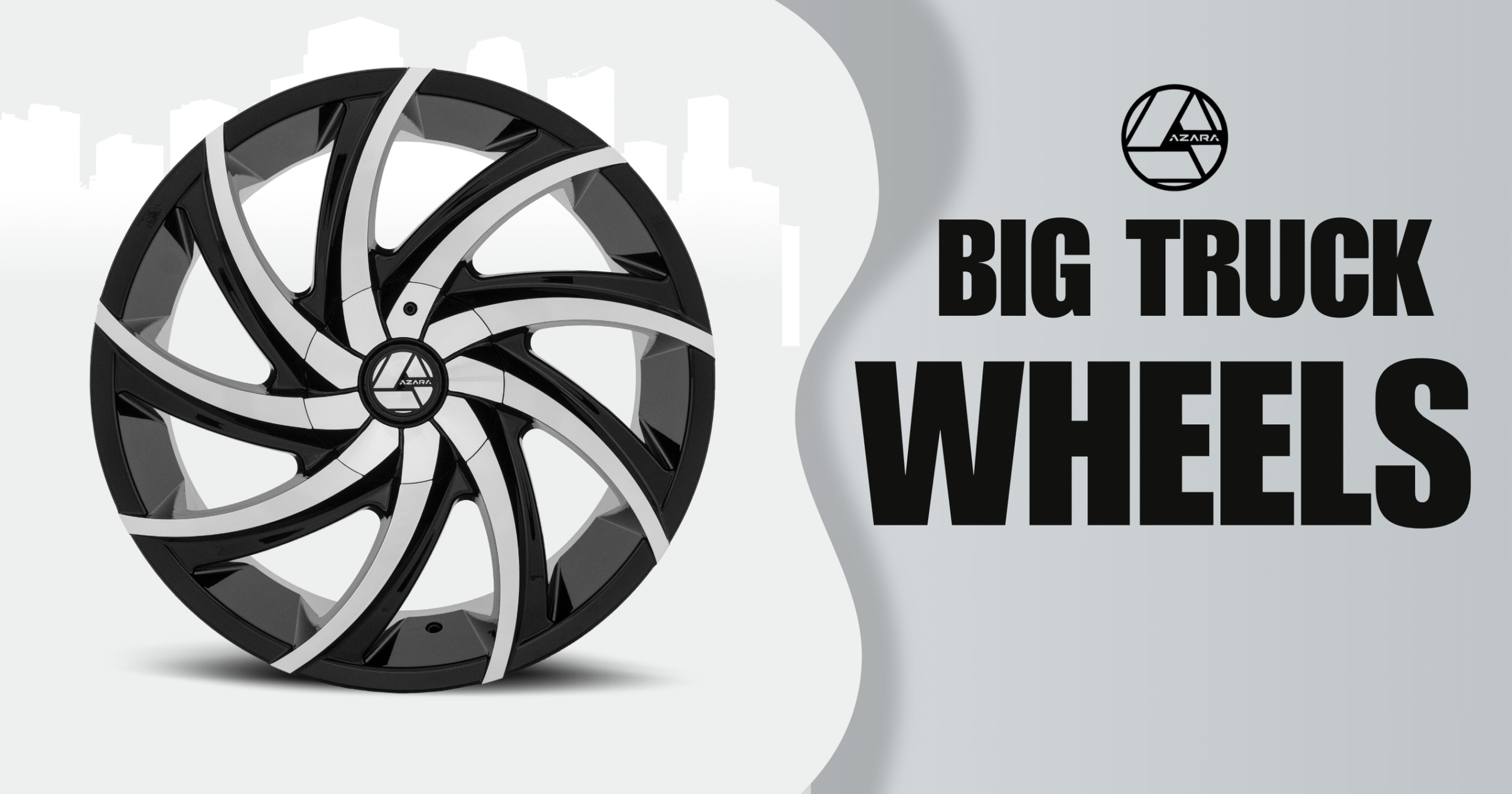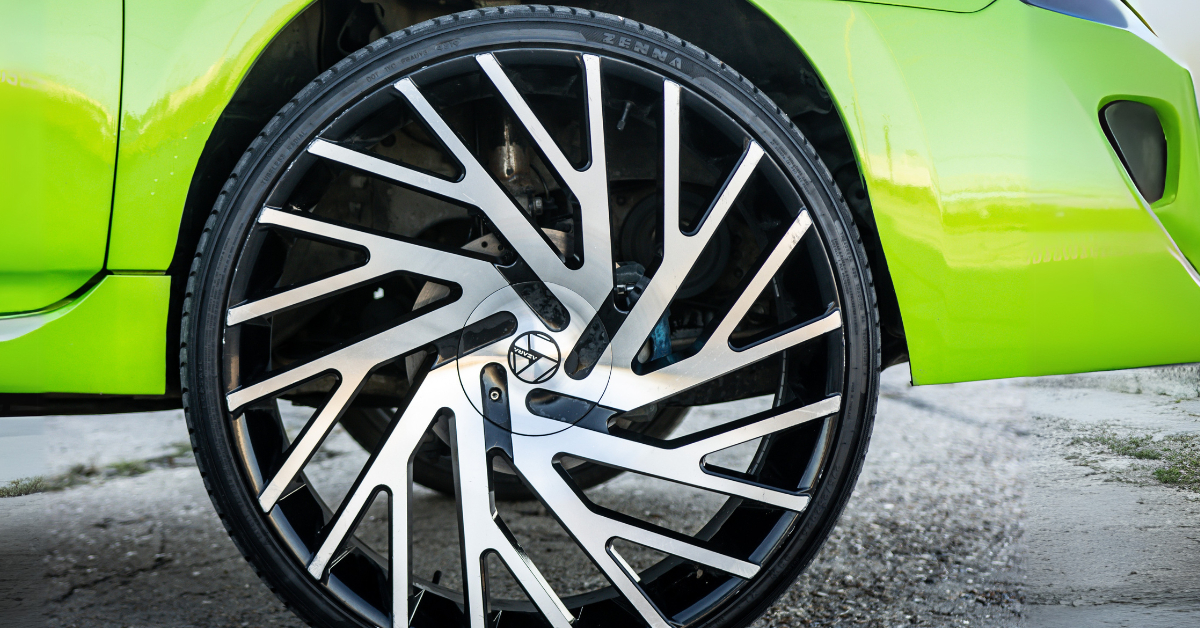Blog
How Long Does Wheel Alignment Take? Find Out the Truth!

A wheel alignment normally takes up to 30-60 minutes. Depending on your vehicle, alignment type and additional repair, the time can take 1.5 to 2+ hours also. Wheel alignment is crucial for your car’s safety and performance. Wheel alignment isn’t just about time. It’s about keeping your car safe, saving money, and ensuring a smooth ride.
Due to potholes, curbs, heavy loads, and bumps, wheels get misaligned. Misalignment can lead to uneven tire wear, poor handling, decreased fuel efficiency, and even safety risks. Proper wheel alignment keeps your car driving straight and smooth, prevents unnecessary tire wear, improves fuel efficiency, and makes your ride safer. Plus, it reduces stress on your suspension and steering parts, helping them last longer.
Why Is Wheel Alignment Important?
Wheel alignment is really important when you have big wheels, like Azara’s 28–32″ rims. Bigger wheels look amazing, but they also put more stress on your tires and suspension. If your wheels aren’t aligned properly, it can cause uneven tire wear, make your steering feel off, and even affect how well your car stops. Proper alignment makes sure your wheels sit at the right angles so your tires grip the road better and your car handles smoothly.
Alignment also helps protect your investment. Big, stylish wheels aren’t cheap, and keeping them aligned helps them last longer and prevents extra wear on your suspension. It also makes your ride smoother, reduces vibrations, and can even save a bit of fuel. In short, alignment keeps your Azara wheels looking great and driving perfectly, so you get both style and performance.
Types of Wheel Alignment
Here’s a quick and easy breakdown to understand the different types of wheel alignment and which one is best for your car:
Type of Alignment | What It Does | Best For | Not Ideal For |
Front-End Alignment (Two-Wheel Alignment) | Adjusts only the front wheels to ensure they are straight. | Older vehicles, trucks, or cars with a solid rear axle. | Modern cars with independent rear suspension. |
Four-Wheel Alignment | Adjusts all four wheels to be properly aligned. | Most modern vehicles, SUVs, and trucks with adjustable rear suspension. | Cars with a fixed rear axle (rear wheels don’t need adjustment). |
Thrust Angle Alignment | Ensures rear wheels are perfectly aligned with the front wheels. | Vehicles with rear-wheel drive or fixed rear axles. | Cars that already require a full four-wheel alignment. |
Toe & Camber Alignment | Fine-tunes toe (wheel direction) and camber (wheel tilt) for better performance. | Performance cars, race cars, and drivers wanting better handling and tire life. | Regular cars that only need basic alignment. |
How long does Wheel Alignment Take?
A wheel alignment typically takes 30 minutes to 1 hour, depending on the type of alignment and vehicle condition. A front-end (two-wheel) alignment usually lasts 30–45 minutes, while a four-wheel alignment takes 45–60 minutes. If additional repairs are needed like replacing worn tie rods or ball joints, it can take 1.5 to 2+ hours.
Factors that can affect alignment time include vehicle size, suspension condition, and shop equipment. SUVs and trucks take longer due to complex suspension systems, and older alignment machines may slow down the process.
Some auto shops offer express alignments in 15–30 minutes using advanced laser technology. However, a proper full alignment should take at least 30–60 minutes for accuracy. Regular alignments prevent uneven tire wear, improve fuel efficiency, and keep your car driving straight, making it a quick but important maintenance step.
Benefits of Proper Wheel Alignment
A proper wheel alignment is essential for maintaining your car’s performance, safety, and efficiency. It ensures that all four wheels are positioned correctly, improving handling and reducing wear on key components. Here’s why regular alignment is important:
Maximizes Tire Lifespan
Aligned wheels help distribute weight evenly across the tires, allowing them to wear at a uniform rate. This extends their lifespan, reducing the need for frequent replacements and saving money on new tires.
Boosts Fuel Efficiency
When wheels are properly aligned, they roll smoothly with minimal resistance. This allows the engine to operate efficiently, optimizing fuel consumption and helping you get the most out of every gallon.
Enhances Driving Stability and Safety
A well-aligned car responds predictably to steering inputs, making driving smoother and more controlled. Proper alignment ensures stability at high speeds, during turns, and in emergency situations.
Protects Suspension and Steering
Wheel alignment keeps essential parts like ball joints, tie rods, and shocks in optimal condition. This reduces unnecessary strain, preventing premature wear and costly repairs.
More Comfortable Ride
Aligned wheels improve handling, ensuring a balanced, vibration-free driving experience. This results in a smoother ride, with precise steering and better road grip.
What Causes Wheel Misaligned?
Your wheels can go out of alignment just from everyday driving. Hitting potholes, curbs, or speed bumps can knock them out of place, especially on rough roads. Over time, suspension and steering parts wear down, slowly affecting alignment. Even a small accident or bump can throw things off, and bigger crashes may bend important parts.
Carrying heavy loads or towing puts extra stress on your suspension, shifting wheel positioning. If you lift or lower your car, the wheels may need realignment. Even uneven tire pressure can mess with balance over time.
How To Check If The Wheels Are Misaligned
Misaligned wheels can cause uneven tire wear, poor handling, and extra fuel use. Here’s how to check:
- Car Pulls to One Side – If your car drifts left or right when driving straight, the alignment may be off.
- Uneven Tire Wear – Look at your tires. If one side wears out faster, it’s a sign of misalignment.
- Off-Center Steering Wheel – Your steering wheel should be straight when driving straight. If not, get it checked.
- Steering Wheel Vibrations – A shaky steering wheel, especially at high speeds, may mean misalignment.
- Noisy Steering or Squealing Tires – Strange steering noises or squealing tires can also be signs.
Step-by-Step Process of a Wheel Alignment
A professional wheel alignment improves handling, prevents uneven tire wear, and enhances fuel efficiency. Here’s how the process works:
Step 1: Inspection
The mechanic starts by inspecting the tires, suspension, and steering components. They look for uneven tire wear, worn-out parts, or damage that could affect alignment. In some cases, a test drive is performed to check for symptoms like pulling to one side or steering vibrations.
Step 2: Mounting the Car on the Alignment Machine
The car is lifted onto an alignment rack, where special clamps and sensors are attached to each wheel. These sensors provide precise digital measurements of the wheel angles.
Step 3: Measuring the Current Alignment
The alignment machine scans the wheels and measures the toe, camber, and caster angles. These values are then compared to the manufacturer’s specifications to determine how much adjustment is needed.
Step 4: Adjusting the Wheels
- Toe Adjustment: The mechanic loosens or tightens tie rods to align the wheels properly.
- Camber Adjustment: If the wheels are tilted too far inward or outward, adjustments are made using suspension components.
- Caster Adjustment: For some vehicles, the caster angle is corrected to improve steering balance and stability.
Step 5: Verifying the Alignment
Once adjustments are made, the alignment machine rechecks the angles to ensure they match factory recommendations. In some cases, the mechanic may take the car for a final test drive to confirm that everything feels right.
Step 6: Final Report & Explanation
A before-and-after report is printed, showing the initial misalignment and the corrected angles. The mechanic explains the changes made and any additional recommendations, such as replacing worn suspension parts if necessary.
Wheel Alignment DIY
Doing a wheel alignment yourself sounds like a money-saver, but it’s not that easy. You need special tools like toe plates and camber gauges, which are expensive and tricky to use. One wrong move can mess up your car’s handling, wear out tires faster, or even cause safety issues. It’s also time-consuming and might void your warranty.
Unless you have the right tools, skills, and knowledge, DIY wheel alignment isn’t worth the risk. A professional alignment ensures accuracy, safety, and long-term savings. It’s one job best left to the experts!
Maintenance of Proper Wheel Alignment
Maintaining proper wheel alignment helps extend tire life, improves fuel efficiency, and ensures safe driving. One of the best ways to protect your alignment is by driving carefully. Avoid potholes, curbs, and rough roads, as these can throw off your wheels. Taking turns and speed bumps slowly also reduces stress on your suspension.
Checking your tire pressure regularly is essential since uneven or low pressure can gradually affect alignment. Keeping your tires inflated to the recommended PSI helps prevent unnecessary strain. Another key step is rotating your tires every 5,000–8,000 miles, which ensures even wear and helps maintain alignment.
Experts recommend getting a wheel alignment check at least once a year or every 6,000–10,000 miles. If you notice steering issues, pulling, or uneven tire wear, it’s best to get it checked sooner.
Bottom Line
A proper wheel alignment is essential for safe driving, better fuel efficiency, and longer-lasting tires. Ignoring alignment issues can lead to uneven tire wear, poor handling, and costly repairs. Regular maintenance, careful driving, and timely checks can help prevent misalignment and keep your car performing at its best.
If you notice signs like steering pulling to one side, uneven tire wear, or vibrations, it’s time to get an alignment check. Keeping your wheels properly aligned not only saves money on tires and fuel but also ensures a comfortable and safe drive. And when it comes to keeping your wheels in top shape, don’t forget to check out Azara Wheels for high-quality wheels.
Frequently Asked Questions
Questions: Can I drive if my alignment is bad?
Answer: Yes, but it’s not safe. Bad alignment makes steering harder, wears tires unevenly, and reduces braking efficiency. Driving too long without fixing it can lead to costly repairs.
Questions: How long can I go without alignment?
Answer: It depends on driving conditions. If you notice pulling, vibrations, or uneven tire wear, get it checked immediately. Generally, alignments should be done once a year or every 6,000–10,000 miles.
Questions: Can Wheel Alignment Improve Gas Mileage?
Answer: Yes! Proper alignment reduces drag, helping your car run more efficiently and saving you money on gas.
Questions: How much does a wheel alignment cost?
Answer: Prices vary, but a 2-wheel alignment costs $50–$100, while a 4-wheel alignment ranges from $100–$200. Extra repairs, like worn suspension parts, can increase the price.

